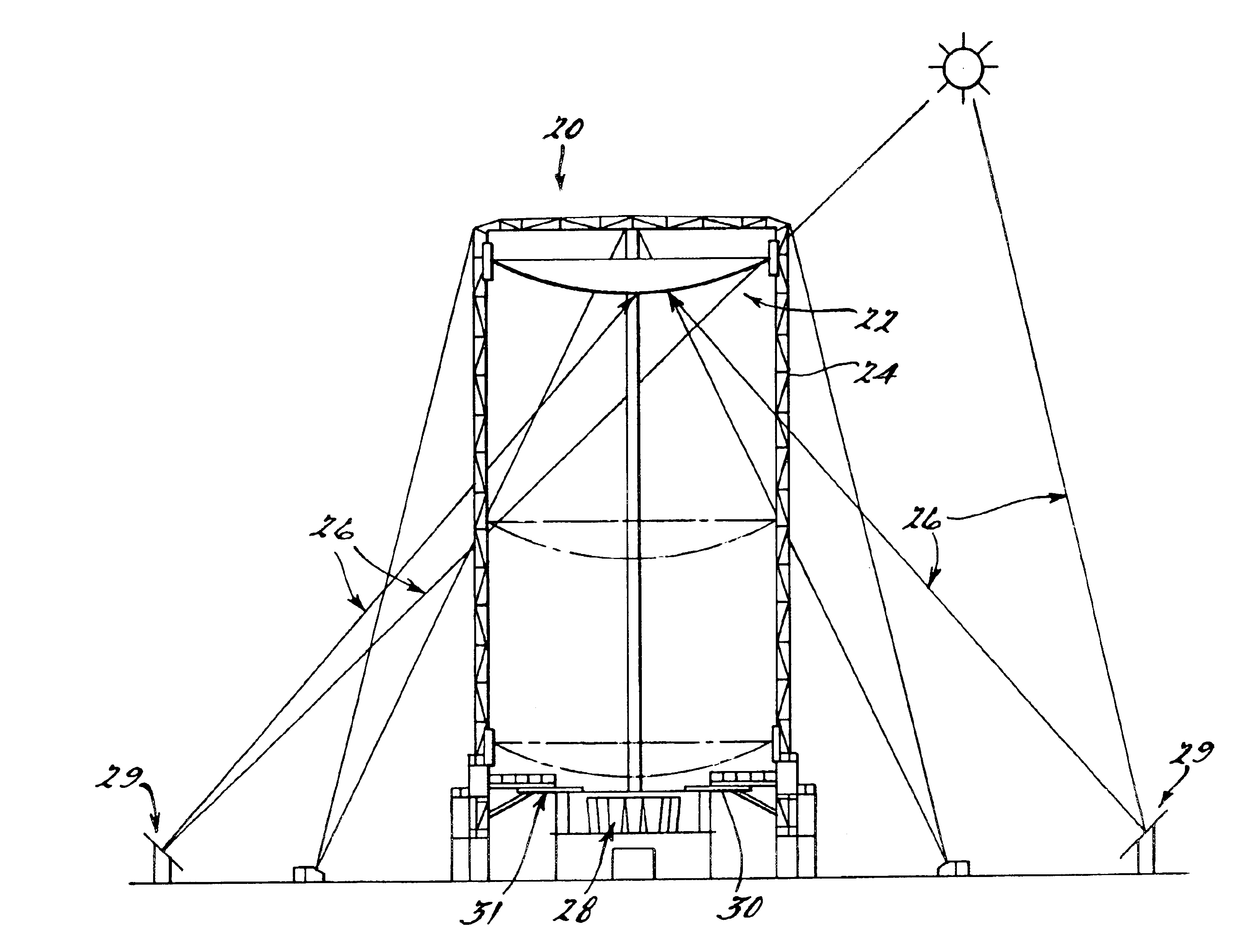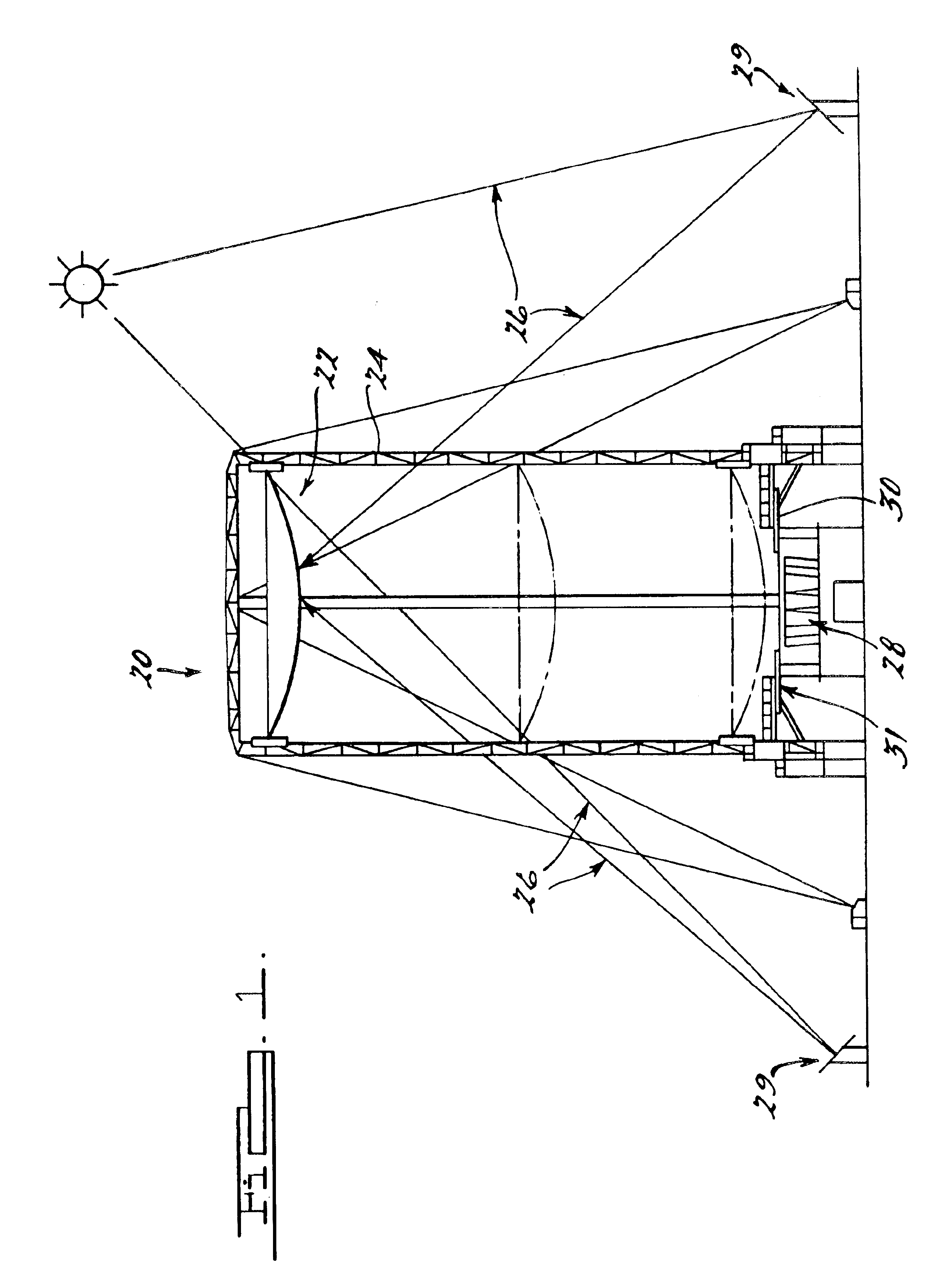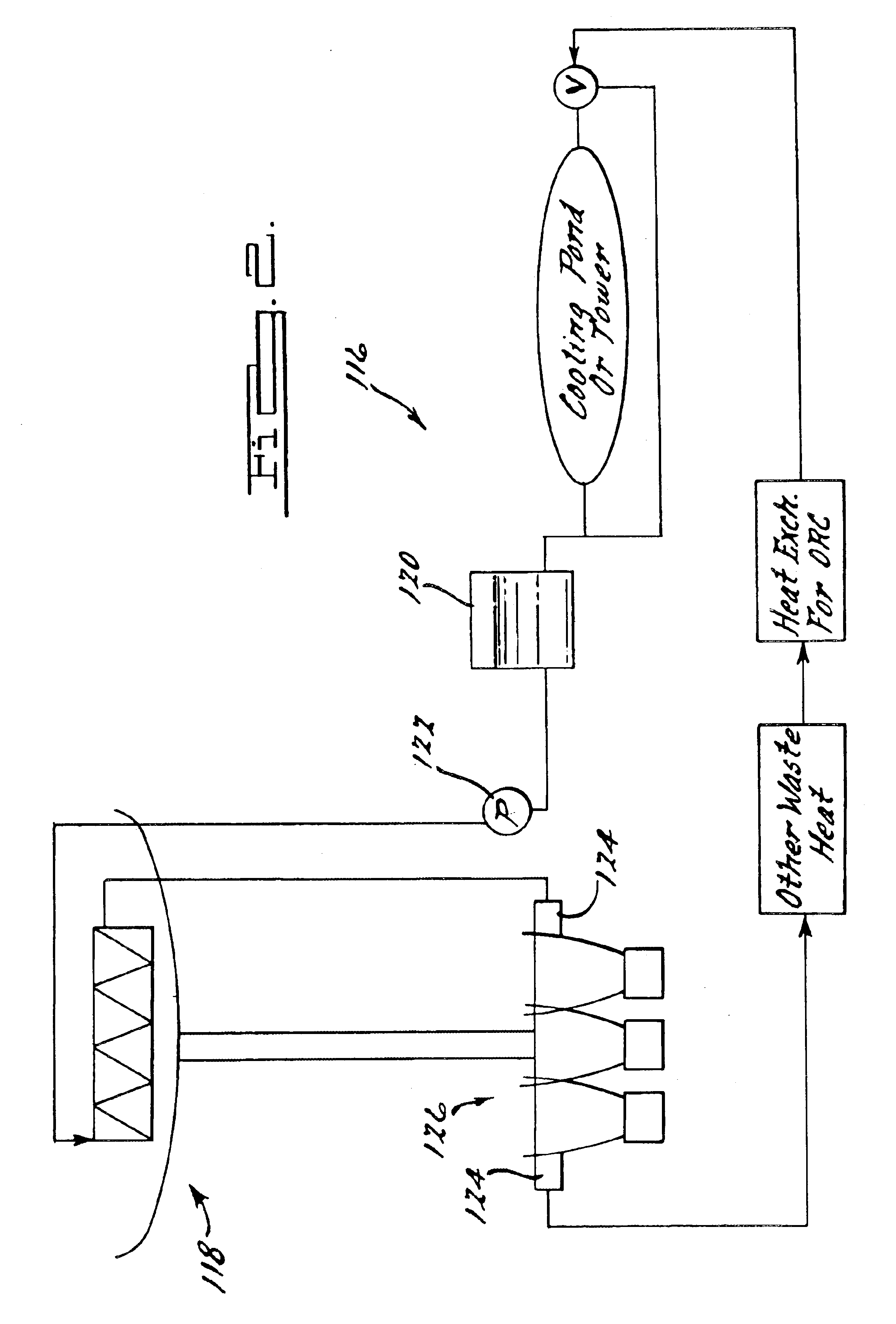Thermally controlled solar reflector facet with heat recovery
a solar reflector and heat recovery technology, applied in the field of solar power plants, can solve the problems of high operating temperature, difficulty, cost and breakage, etc., and achieve the effect of improving the operation of the concentrator, effectively wasting in the conventional system
- Summary
- Abstract
- Description
- Claims
- Application Information
AI Technical Summary
Benefits of technology
Problems solved by technology
Method used
Image
Examples
Embodiment Construction
[0036]Reference will now be made in detail to the present preferred embodiments of the invention, examples of which are illustrated in the accompanying drawings. Wherever possible, the same reference numerals will be used throughout the drawings to refer to the same or like parts.
[0037]Turning now to FIG. 1, a high concentration central receiver system 20 is shown in greater detail. The receiver system 20 has a plurality of interconnected reflectors 22 (or reflector assemblies) coupled to a tower structure 24 at a predetermined height above ground for reflecting solar radiation 26. A plurality of concentrators 28 are disposed between the reflectors 22 and the ground such that the concentrators 28 receive reflected solar radiation from the reflectors 22. A heat removal system 30 (or spillage collector) removes heat from the reflectors 22 and an area immediately adjacent the concentrators 28.
[0038]Thus, FIG. 1 shows the basic beam down optics central receiver concept with the reflecto...
PUM
| Property | Measurement | Unit |
|---|---|---|
| Temperature | aaaaa | aaaaa |
| Concentration | aaaaa | aaaaa |
| Area | aaaaa | aaaaa |
Abstract
Description
Claims
Application Information
 Login to View More
Login to View More - R&D
- Intellectual Property
- Life Sciences
- Materials
- Tech Scout
- Unparalleled Data Quality
- Higher Quality Content
- 60% Fewer Hallucinations
Browse by: Latest US Patents, China's latest patents, Technical Efficacy Thesaurus, Application Domain, Technology Topic, Popular Technical Reports.
© 2025 PatSnap. All rights reserved.Legal|Privacy policy|Modern Slavery Act Transparency Statement|Sitemap|About US| Contact US: help@patsnap.com



